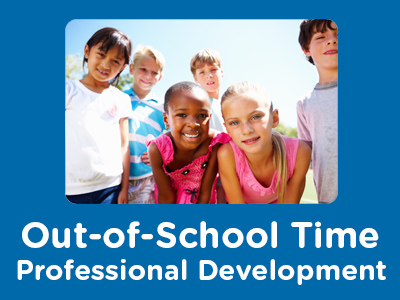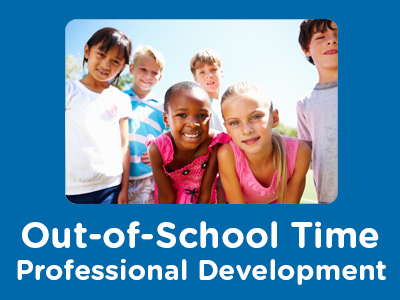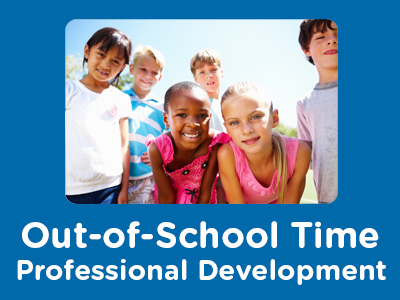 |
Human Relations Skill Development: Good Communication Skills |
0.67 |
Being able to communicate effectively is an essential human relations skill for school-age care professionals. To be a good communicator, school-age professionals need to understand the components of communication and how the communication process works. They need to identify barriers to clear communication and develop strategies for minimizing or eliminating barriers to communication. School-age care professionals also need to work cooperatively with other team members to solve problems and conflicts. In this course, we will explore good communication skills. |
 |
Human Relations Skill Development: Focus on Leadership Styles and Conflict Management: Managing Conflict |
1.00 |
Research indicates that those in positions of leadership use a variety of different leadership and management styles. A person’s effectiveness as a leader is often directly linked to his or her leadership style. It is important for school-age care professionals to be aware of the assumptions and characteristics of different leadership styles. Knowledge of different leadership styles can help school-age care professionals reflect on their own leadership style, and assess its effectiveness. Leaders also use a variety of different styles when it comes to managing and resolving conflicts. By understanding how to diagnose the causes and dynamics of conflict, and understanding the characteristics of different conflict management styles, school-age care professionals can choose the best conflict management strategy for each situation. |
 |
Human Relations Skill Development: Focus on Leadership Styles and Conflict Management (Collection) |
2.00 |
Research indicates that those in positions of leadership use a variety of different leadership and management styles. A person’s effectiveness as a leader is often directly linked to his or her leadership style. It is important for OST professionals to be aware of the assumptions and characteristics of different leadership styles. Knowledge of different leadership styles can help OST professionals reflect on their own leadership style and assess its effectiveness. It can also help OST professionals take a proactive approach to applying different leadership styles and techniques, depending on the situation.
Leaders also use a variety of different styles when it comes to managing and resolving conflicts. By understanding how to diagnose the causes and dynamics of conflict and understanding the characteristics of different conflict management styles, OST professionals can choose the best conflict management strategy for each situation.
There are a number of skills that enhance the ability of OST professionals to employ different leadership and conflict management styles effectively. When OST professionals are aware of these skills and their own skill levels, they can set priorities for ongoing development of leadership skills. |
 |
Human Relations Skill Development: Focus on Leadership Styles and Conflict Management |
2.00 |
Research indicates that those in positions of leadership use a variety of different leadership and management styles. A person’s effectiveness as a leader is often directly linked to his or her leadership style. It is important for OST professionals to be aware of the assumptions and characteristics of different leadership styles. Knowledge of different leadership styles can help OST professionals reflect on their own leadership style and assess its effectiveness. It can also help OST professionals take a proactive approach to applying different leadership styles and techniques, depending on the situation.
Leaders also use a variety of different styles when it comes to managing and resolving conflicts. By understanding how to diagnose the causes and dynamics of conflict and understanding the characteristics of different conflict management styles, OST professionals can choose the best conflict management strategy for each situation.
There are a number of skills that enhance the ability of OST professionals to employ different leadership and conflict management styles effectively. When OST professionals are aware of these skills and their own skill levels, they can set priorities for ongoing development of leadership skills. |
 |
Human Relations Skill Development: Cultivating Communication Skills |
0.67 |
Being able to communicate effectively is an essential human relations skill for school-age care professionals. To be a good communicator, school-age professionals need to understand the components of communication, and how the communication process works. They need to identify barriers to clear communication, and develop strategies for minimizing or eliminating barriers to communication. School-age care professionals also need to work cooperatively with other team members to solve problems and conflicts. In this course, we will explore strategies for cultivating good communication skills. |
 |
Human Relations Skill Development: Communication and Team Building for Paraprofessionals |
1.00 |
Being able to communicate effectively is an essential human relations skill for paraprofessionals. To be a good communicator, paraprofessionals need to understand the components of communication, and how the communication process works. They need to identify barriers to clear communication and develop strategies for minimizing or eliminating barriers to communication. Assessing the current status of personal human relations skills helps each professional identify priorities for making improvements to these skills. |
 |
Human Relations Skill Development (Collection) |
2.00 |
Being able to communicate effectively is an essential human relations skill for school-age care professionals. To be a good communicator, school-age professionals need to understand the components of communication and how the communication process works. They need to identify barriers to clear communication and develop strategies for minimizing or eliminating barriers to communication. School-age care professionals also need to work cooperatively with other team members to solve problems and conflicts. This requires an understanding of how teams work and the characteristics of effective teams. Assessing the current status of personal human relations skills helps each professional identify priorities for making improvements to these skills. |
 |
Human Relations Skill Development |
2.00 |
Being able to communicate effectively is an essential human relations skill for school-age care professionals. To be a good communicator, school-age professionals need to understand the components of communication and how the communication process works. They need to identify barriers to clear communication and develop strategies for minimizing or eliminating barriers to communication. School-age care professionals also need to work cooperatively with other team members to solve problems and conflicts. This requires an understanding of how teams work and the characteristics of effective teams. Assessing the current status of personal human relations skills helps each professional identify priorities for making improvements to these skills. |
 |
HR Strategic Planning |
1.00 |
For your Human Resources Department to truly make a strategic impact within your organization, it's vital to be able to share the strategic goals of your Human Resources department. Otherwise, how will your organization leaders understand what value your department adds - and also the important role that the Human Resources Department plays in the overall organizational strategic plan? This session will cover how the World Famous San Diego Zoo's Human Resources Team developed a World Class HR Strategic Plan - taking their Human Resources practices to another stratosphere, and creating award-winning Best Practices that are now being shared with companies nationwide. |
 |
How to Find an Extra 30 Minutes a Day for Training and Enrichment! |
1.00 |
"I wish I had more time to do what I like doing!" This common expression relates to many concepts all vying for the same time and attention simultaneously. Rarely is there time or resources available to dedicate to enrichment and training. Nowhere is this more evident than in the Animal Keeper’s daily role. This course will provide an opportunity for the keeper/trainer to evaluate the daily processes to identify and eliminate Non Value Added process steps and allow more time for enrichment and training. Useful concepts, such as Root Cause and Current State/Future State will be used to identify the waste. There will be tools provided, which can be applied in any situation, to simplify work duties and increase daily efficiency. |











